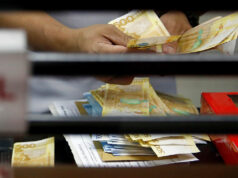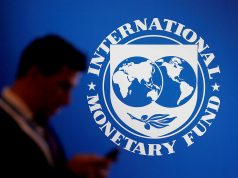Peso climbs vs dollar ahead of holiday
THE PESO regained strength against the dollar on Thursday on profit taking after the US currency’s recent rise and ahead of the Chinese New Year holiday.
The local currency ended the trading week at P52 against the greenback yesterday, 12 centavos stronger than its P52.12 close on Wednesday.
The peso traded stronger the whole day, opening the session at P52.08 versus the dollar, which was also its worst showing yesterday. Its intraday high, meanwhile, was seen at P51.955 to the greenback.
Dollars traded declined to $578.5 million Thursday, Feb. 15, from the $939.9 million that changed hands the previous session.
“The peso rebounded as investors started to take profits from the three-day strength of the dollar,” a trader said over the phone on Thursday.
Another trader shared the same sentiment, adding that the peso traded sideways on Thursday as “market players took profits or lightened their positions ahead of the Chinese New Year holiday.”
Meanwhile, a third trader noted that the slightly stronger peso came after the release of US consumer price index (CPI) data.
US consumer prices rose more than expected in January as Americans paid more for gasoline, rental accommodation and health care, raising pressure on new Federal Reserve chief Jerome Powell to prevent a possible overheating of the economy.
The report from the US Labor Department on Wednesday, however, likely overstates the inflation picture given that some of the price gains, especially for apparel and motor vehicle insurance, are seen by economists as unsustainable.
Inflation, which could get a further boost from a tightening labor market and increased government spending, might force the Fed to be more aggressive in raising interest rates this year than currently anticipated. That would slow economic growth.
The US central bank has forecast three rate hikes for this year, with the first increase expected at its next policy meeting in March. Powell took over the reins of the Fed from Janet Yellen earlier this month.
The US Labor Department said its Consumer Price Index increased 0.5% last month as households paid more for gasoline, rental accommodation and health care. The CPI rose 0.2% in December.
The year-on-year increase in the CPI was unchanged at 2.1% in January as the large price gains from last year dropped out of the calculation.
Excluding the volatile food and energy components, the CPI shot up 0.3%. That was the largest increase since January 2017 and followed a 0.2% rise in December. The year-on-year rise in the so-called core CPI was unchanged at 1.8% in January.
“I think the market already priced in, that’s why instead of trading [lower] due to the indicators which will lead to higher inflation, we just traded within the range,” the second trader said.
Other Asian currencies also firmed on Thursday, boosted by heftier global risk appetites as the dollar slipped despite stronger-than-anticipated US inflation and a rise in Treasury yields.
Tracking a rally in Wall Street, Asian stocks brushed aside US inflation data.
The dollar index weakened to a near two-week low, after the rebound in equities, evoking the idea that the greenback might be in a period of persistent weakness.
“The dollar advanced against other currencies when US CPI inflation was released but pared the gains and weakened later as US equities proved more resilient…,” Qi Gao, foreign exchange strategist at Scotiabank, said on Wednesday. “Continued risk appetite sent Asian currencies higher this morning, I think risk appetite will likely continue as synchronized global growth is expected to boost the [euro] and [Japanese yen], while bolstering EM (emerging market) Asian currencies as long as risk appetite sustains.” — KANV with Reuters



